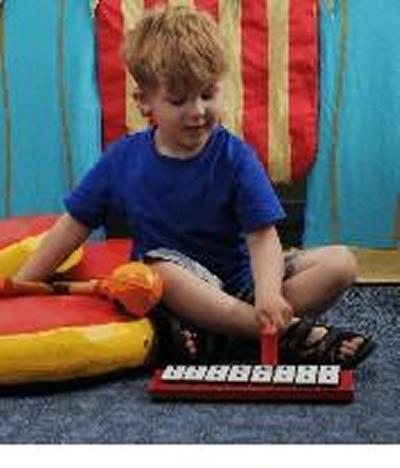Music listening tips and resources for young cochlear implant users
Resources:
The Listening Room (Advanced Bionics) - for infants, kids, teens and adults
A Musical Journey (Advanced Bionics) - for children aged 2.5-8 years. Available from the Ear Foundation (search for 'Musical Journey')
HOPE (Re)Habilitation Resources (Cochlear)
Kids' Songs and other music resources from Med-El
Music Time (Advanced Bionics & Christine Rocca). Available from the Ear Foundation (search for 'Music Time')
Chatting and Singing with Young Deaf Children. Available from the Ear Foundation (search for 'Chatting and Singing')
Visit the website of the Music and the Deaf charity for information about their projects, events and resources
FAQs:
My little girl has a cochlear implant. Can she hear music?
The vast majority of children with cochlear implants hear music. However, music is not the same for her as it is for children with normal hearing and even between cochlear implant users, each individual’s experience of music is different. She is likely to hear the rhythm, may pick up the words and might pick up the notes but this varies from person to person.
My boy has a cochlear implant. Can he hear me singing?
Yes, your child will hear you if you sing to him when he is wearing his processor(s). Singing is very important for young children so it’s well worth doing even if your child does not seem to respond to start with.
My child has a cochlear implant. How can I introduce her to music?
Choose music that is appropriate for the age of your child. For young children it is good to start with simple nursery rhymes. Sing to her and look for responses; encourage her to join in as much as possible. Use actions, visual clues, signing, books and any other resources you have to hand to help.
You can also encourage the use of musical instruments. Let your child hear recorded versions of the same music so that she hears the beat coming through clearly. Recorded versions with a simple accompaniment are likely to be most effective. DVDs may be particularly good for reinforcing the music you are teaching her as the picture may help to focus your child’s attention.
As your child grows older she may move on to different styles of music. It’s worth remembering that rhythm is a key part of music and it generally comes across well through the implant. Pieces with lots of instruments playing and loud accompaniments are more difficult to hear.
My child has a cochlear implant. Should my child learn to play an instrument?
We know that some children with cochlear implants are learning to play instruments. For children with normal hearing, learning to play an instrument can be enjoyable and also helps to develop auditory memory and specific listening skills.
It’s too early to say to what extent children with cochlear implants might expect to benefit from learning a musical instrument. However, the fact that some children have progressed with learning instruments and enjoy the experience suggests that it can be beneficial.
We suspect that some instruments might be easier to hear clearly and learn through a cochlear implant than others. We would like to carry out some more formal research in this area to enable us to give specific advice in the future. At present information is limited but suggests that the following instruments might be more suitable than others:
- percussion (drums etc)
- piano
- guitar
- harp
- flute
- possibly also the clarinet and trumpet
We intend to update this list as the picture becomes clearer. We would welcome your feedback. If you are able to tell us about your experiences of learning a musical instrument, or the experiences of your child, please email us – we would love to hear from you:
mlf (@) isvr.soton.ac.uk
What does music sound like through a cochlear implant?
Music will sound different for each person with a cochlear implant because each ear is different and the extent to which it has been affected by the disease process which caused the deafness varies from one person to another. However, cochlear implant processing is similar for patients using the same device and we can create simulations to give us a very rough idea of what a cochlear implant might sound like.
Here are a couple of examples to give you a feel for how it might sound for your child. You may notice that the more times you listen to the simulation, the better it will sound.
If You're Happy And You Know It
London Bridge
Row Row Row Your Boat
Children’s music lessons in mainstream schools
Music lessons for children with cochlear implants in mainstream settings can be very challenging. There may be a large number of children making music at the same time and this can present the implant with a signal which is too complex to be meaningful. We suggest that if a child with a cochlear implant is playing an instrument, he/she should use a direct input from the instrument to the speech processor where possible.
